Ever since KAV Helmets refocused on cycling in 2021, we’ve been closely following their development. 3D printing opens up a load of potential when it comes to helmet design, including the ability for constant iteration and improvement. I’ve been able to try most of the models since KAV started printing helmets, and that’s exactly what we’ve seen – each model has been better than the last. But when it comes to the Rhoan, this is more than just a slight improvement – it’s a new era in 3D-printed helmets.
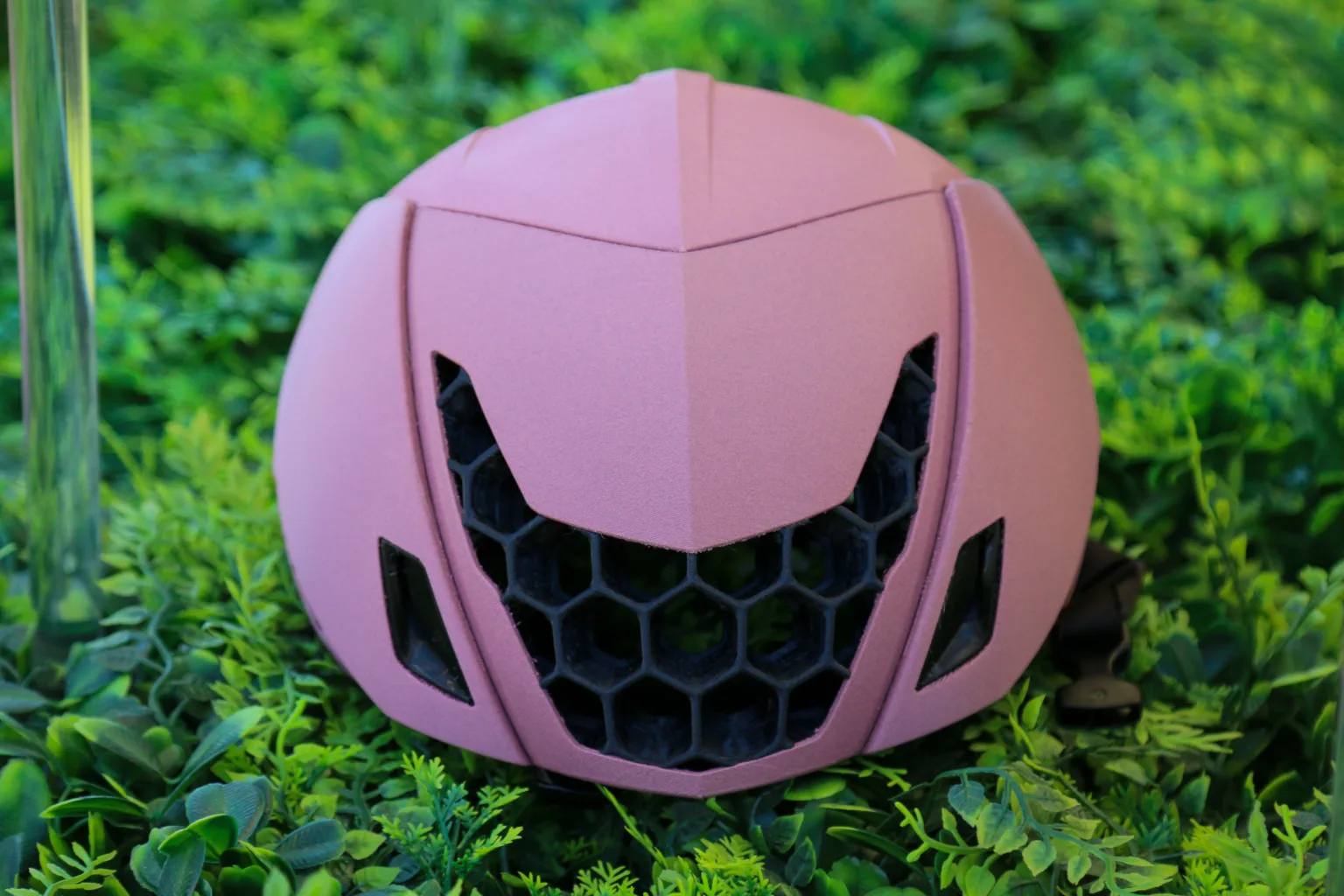
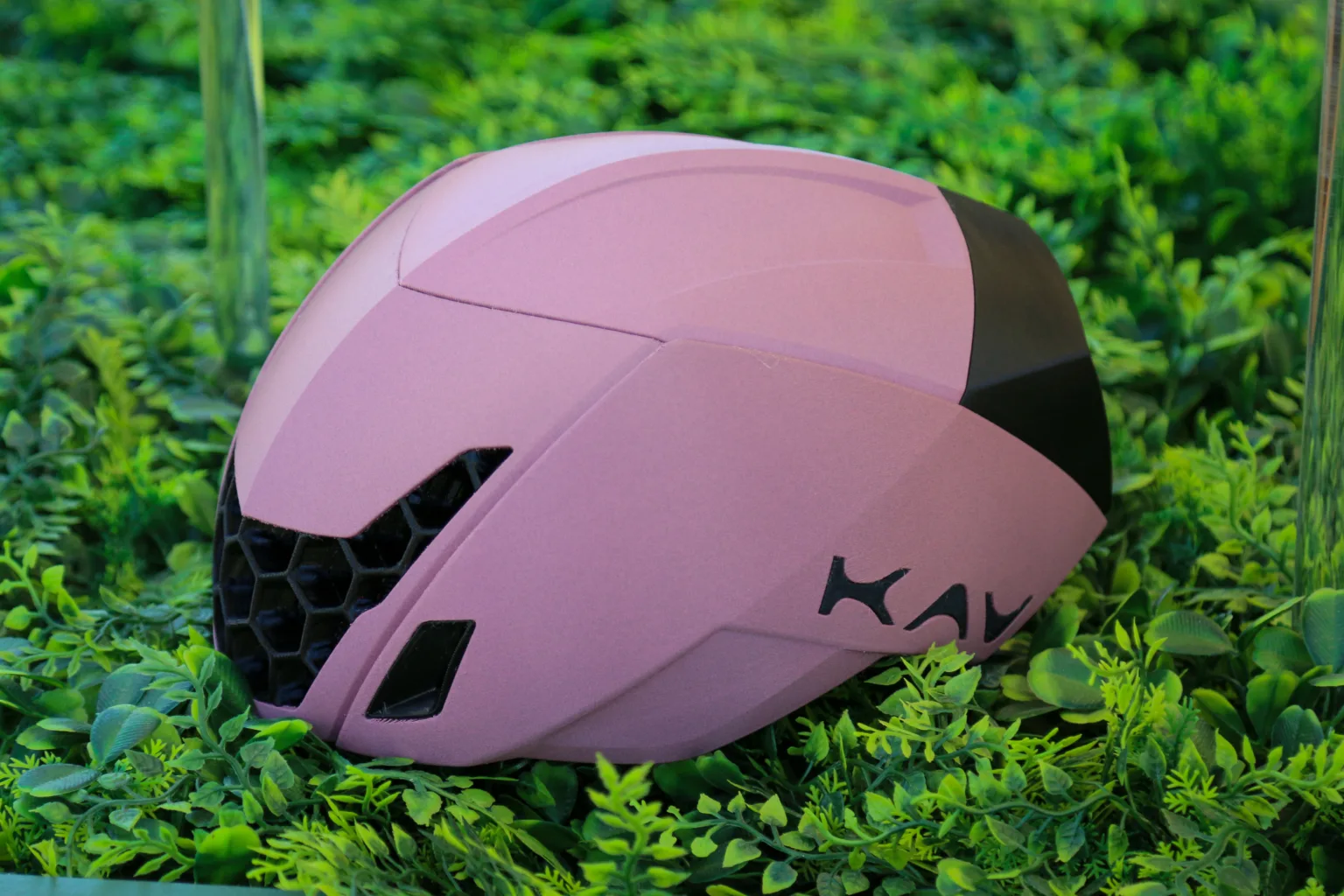
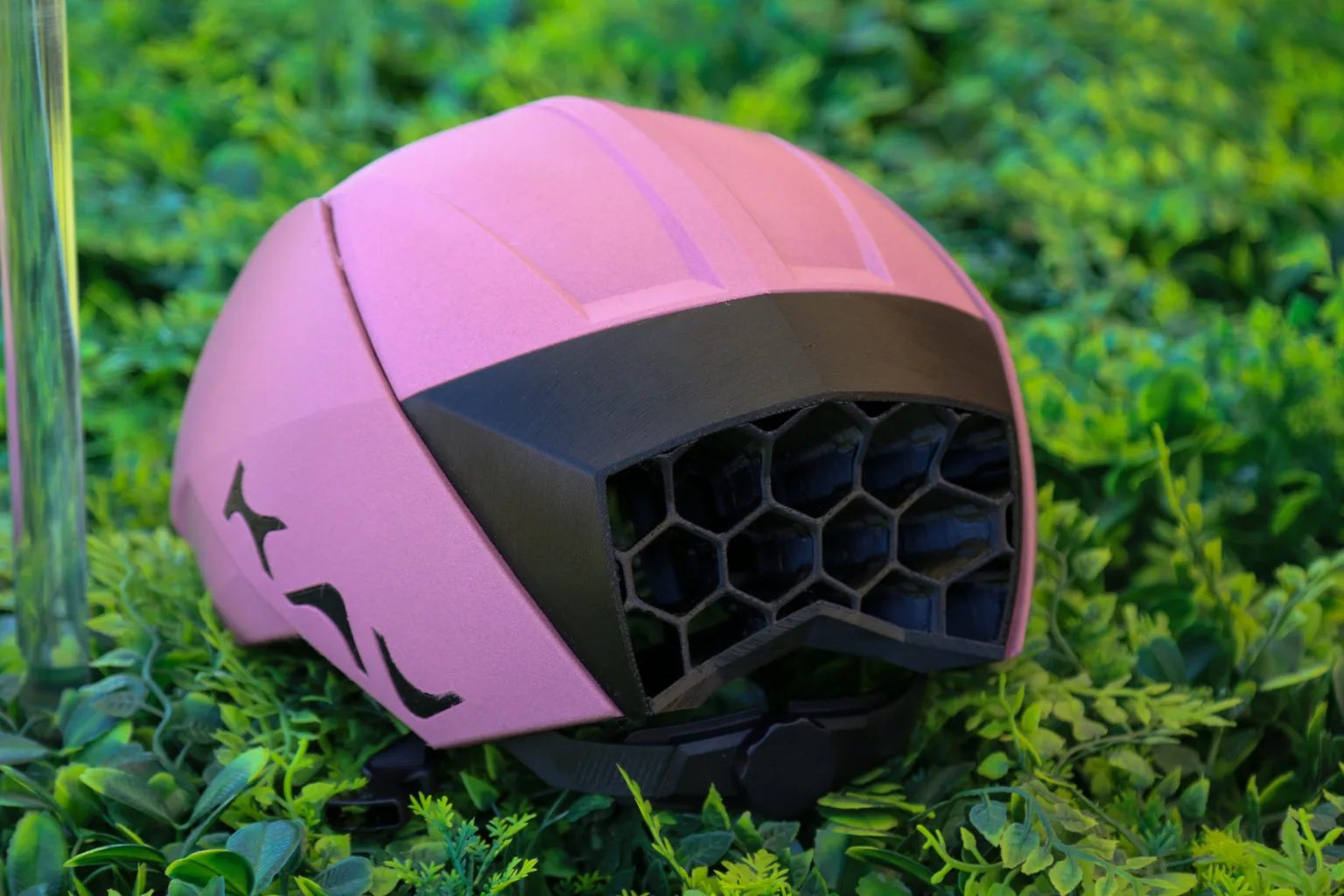
KAV set out to create the best aero road helmet with the Rhoan, but this is more than just a more aerodynamic shell. Part of the KAV story is the creation of a custom-to-you shell that is 3D printed to fit your head. Because of that, earlier KAV helmets lacked retention systems and didn’t offer much in the way of adjustment.
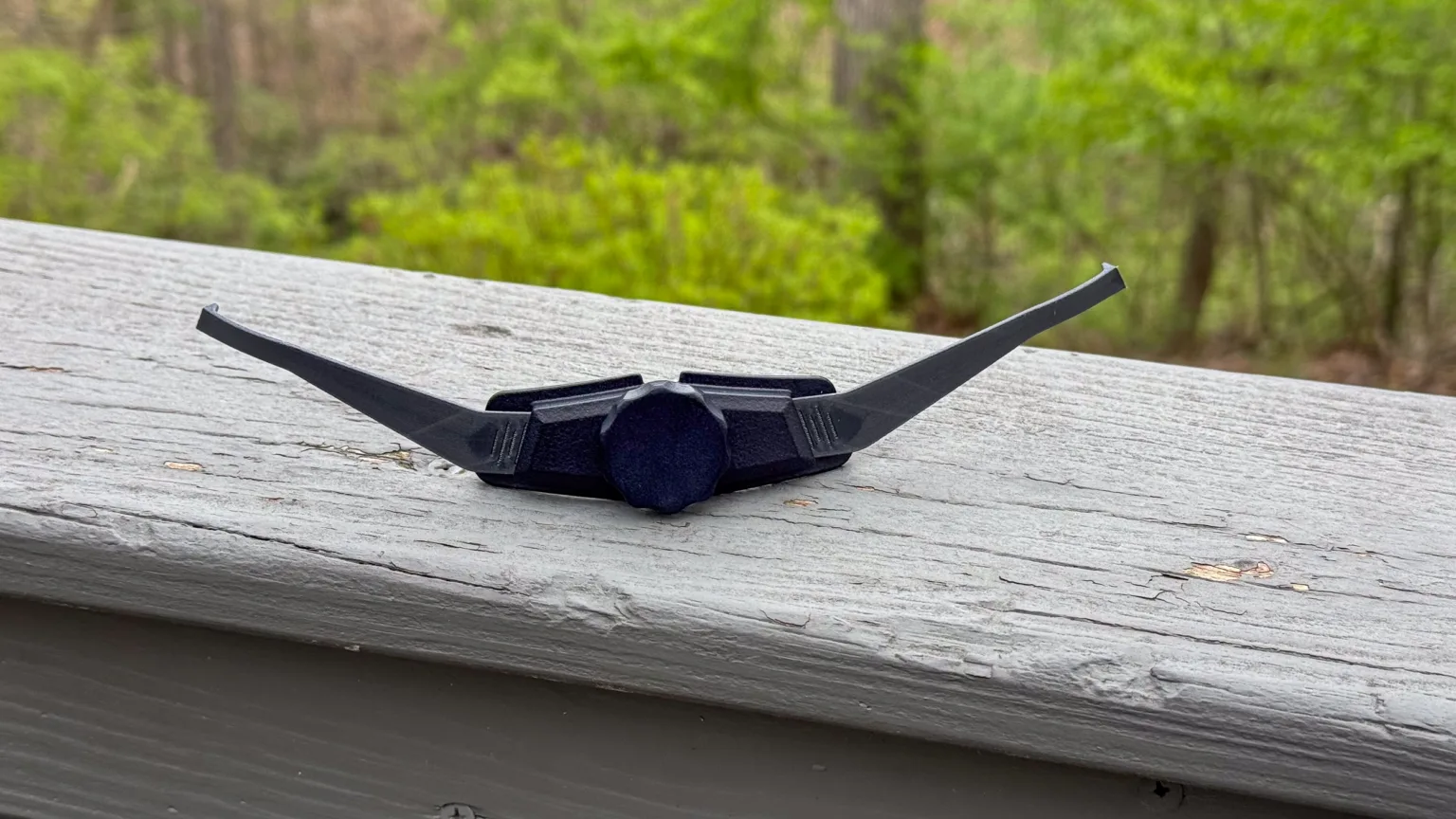

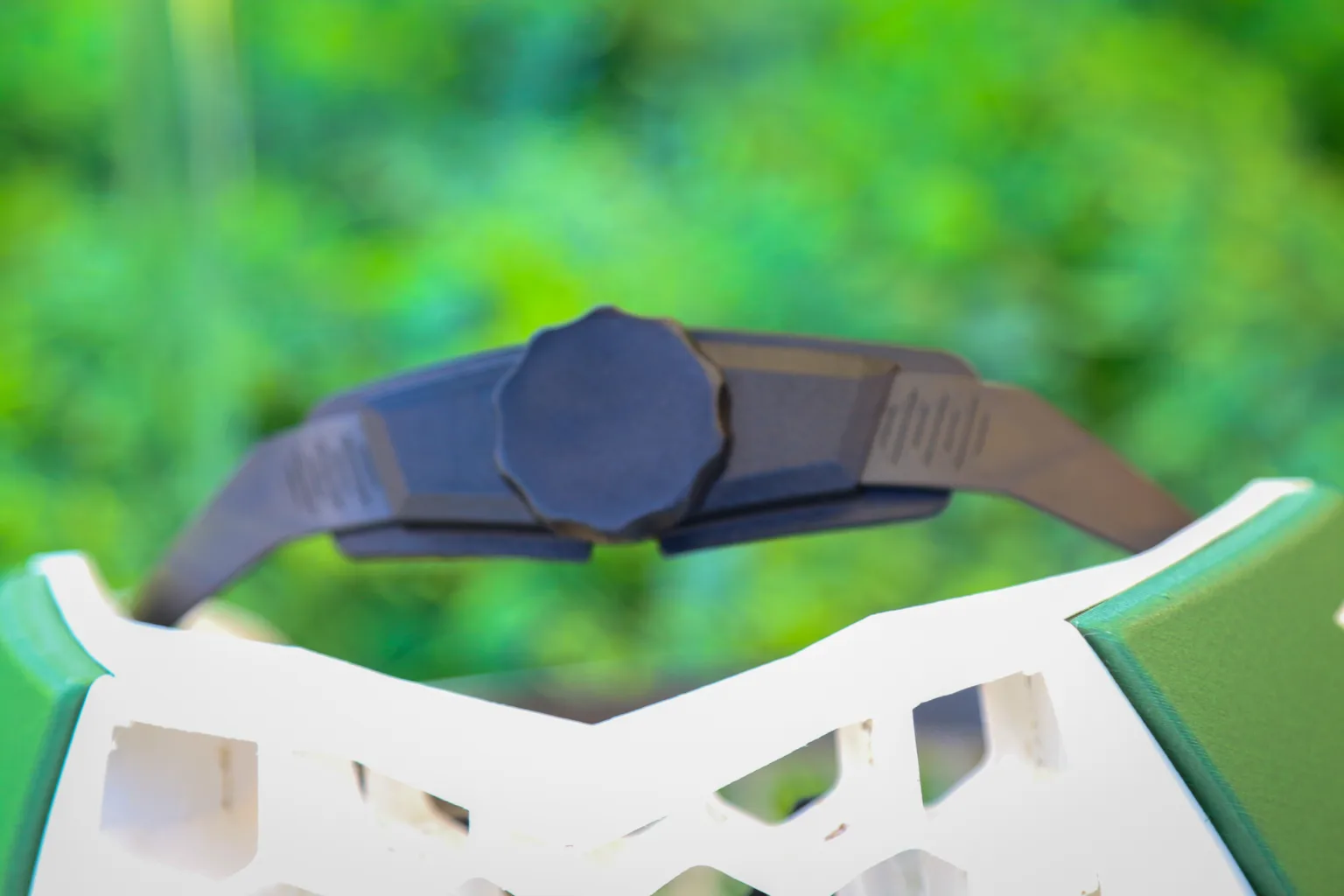
In order to offer the ability to adjust around different cycling caps, changes in hair thickness, weight loss or gain, etc., the Rhoan now features a removable retention system (that is also 3D-printed with powder bed fusion). You can technically use the helmet without it, but I like the added security the adjuster provides. More importantly, it makes wearing a cycling cap underneath possible, even with thicker winter caps.

The other massive improvement to the fit of the helmet comes in the form of suspension. The Air Fit Suspension System padding, that is. While the previous KAV helmets had innovative spring-loaded padding, it wasn’t very comfortable – especially if you’re bald. Their new Air Fit padding is not only more comfortable than their previous designs, it’s now more comfortable than most helmet padding on the market.
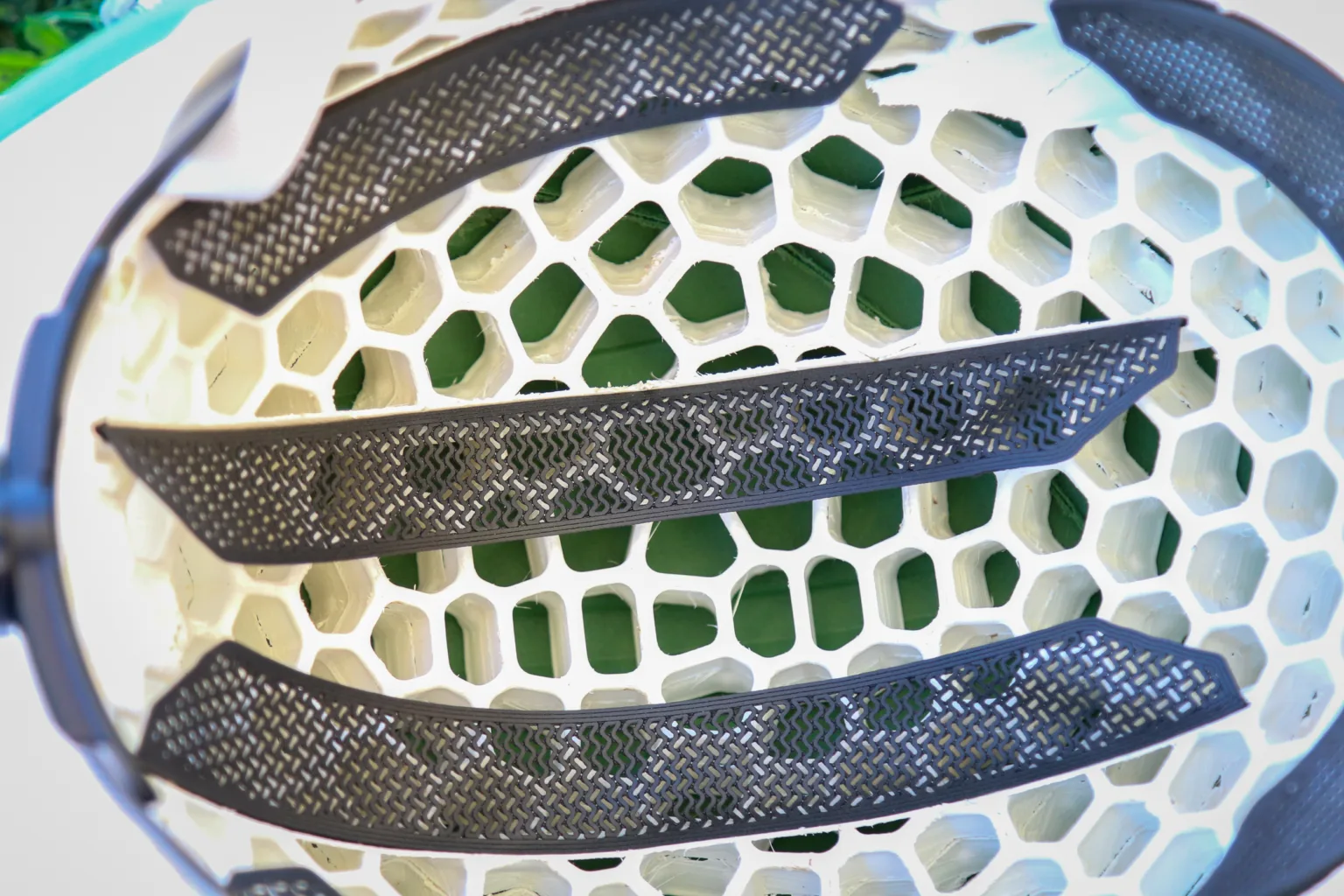
The thin, 3D-printed webbing strips don’t look like they’ll do much of anything, but when you put it on your head, you have that “….ohhh,” moment of comfort. Additionally, the hammock-like strips suspend the helmet off your head to improve airflow and eliminate pressure points by distributing the load over a larger area. KAV also pointed out that for some riders with thick hair, those voluminous locks can actually block the airflow in most helmets. The KAV padding system serves to press down thick hair and maintain channels through the helmet to aid in ventilation.
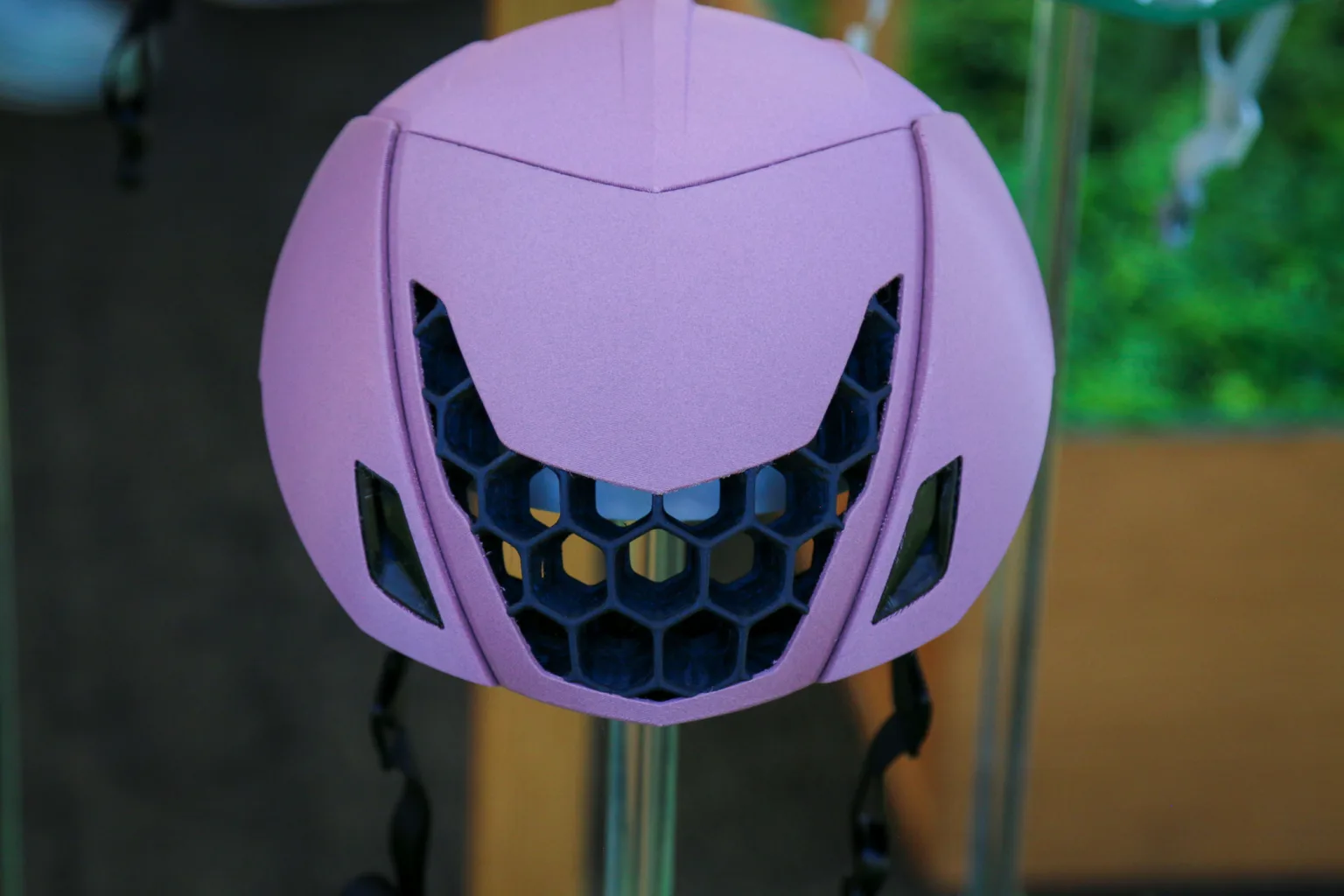

Ventilation is also a big part of the Rhoan design. KAV’s CEO and founder Whitman Kwok pointed out that aero is important, but so is thermal regulation. You can be fast in an aero helmet, but if the lack of ventilation is thermally limiting, then you’re holding yourself back. KAV wanted to create an aero helmet that didn’t sacrifice ventilation for speed, and they claim to have the A2 wind tunnel test data to prove that the Rhoan is within 1/2-1 watt of the best-in-test competition, but with much better airflow.
Part of that comes down to the large frontal vent, which is also very close to the drip line of the helmet. Whitman says you can’t do that with a foam helmet, because it would deteriorate on impact, while the 3D-printed honeycomb structure of the Rhoan will maintain its integrity.

There’s also a more open Hex Honeycomb Structure 2 inside the helmet, that helps channel heat away from your head to the outer shell made from a new PolyCarbon composite material that claims to wick heat 8x better, and cools 2x faster than EPS foam. Currently, all colors except white use the material which is a carbon fiber-embedded polymer that offers a better finish and feel that is slightly more durable. That new internal structure also works hand-in-hand with an optimized shell design which reduces the side profile of the helmet by 3mm per side.
The large HexFlow rear exhaust port also helps pull air through the helmet and out the back to prevent overheating.


Additionally, KAV managed to 3D-print very effective sunglass holders, which was not an easy task. Whitman pointed to the fact that every helmet is slightly different in size, so creating a sunglass holder that worked across the range with a wide variety of sunglass styles was a big challenge. But it works quite well.
But What About Safety?
While the Rhoan helmet does not have a specific score from Virginia Tech yet, it uses the same Hex Honeycomb Structure 2 as the KAV Nova, which has a five-star rating and a STAR value score of 13.49, ranking it #144 of 264 helmets tested. Not all that surprisingly, the Nova ranks lower than the average five-star rated helmet for low impact energy crashes, but slightly higher than average for high impact energy crashes. The Hex structure does have a dual-density design to crumple and absorb energy and rotational forces, but it definitely seems more rigid than most EPS foam, which seems like it would affect the low impact energy scores. There’s quite a bit of difference between the Rhoan and the Nova though, so hopefully, VT will be able to test this version soon.
UPDATE: After speaking to Whitman after this post went live, he confirmed that VTech will have a Rhoan specific test posted soon. The numbers for the Rhoan are apparently quite a bit better than the Nova, with a score of 9.26, which would move them up to the #18 spot. Whitman also tells that VT told them that “they were the thinnest helmet in the top 20 spots.”
I also asked about the helmet sizes used for testing, and Whitman responded, “We have a set of fixed sizes that we hold consistent for CPSC, VTech, and our own internal test matrix. This forces engineering to make the best possible helmet for cyclists across scenarios, allows for apples-to-apples comparisons across tests, and does not optimize for a particular testing standard. Conversely, a manufacturer can submit a size Large to VTech (there’s overlap in the sizes after all), which typically increases the offset by ~5%, which would generally improve the score.”
How Do You Get Fit for a 3D-Printed Helmet?
When it comes to the fit, riders have two options (three if you want to travel to Bay Area and get fit in person). KAV offers an iPhone app that uses a machine learning algorithm to measure your face and head, and then turn that into a print file. KAV will then print out a ‘fit cap’ and send that to you to try on. If it fits, then they’ll go ahead and print your helmet. If it doesn’t fit, they’ll ask for feedback and try again.
Alternatively, you can get a manual fit kit, and measure the old-fashioned way. This is how I was measured for my first KAV helmet, and after trying the app-based method, the manual fit kit seems like the way to go for now.
Pricing, Weight & Warranty

Once your measurements are dialed, and you pay the $300 for the Rhoan, your helmet will be printed in the USA with a goal of two weeks for delivery. KAV is in the process of opening up a new print facility in New York that will greatly expand their capacity, which they hope to have operational by the end of the month – which is also when KAV expects the Rhoan to be available for order on the site.
All helmets include a 5-year warranty, with free crash replacement.
